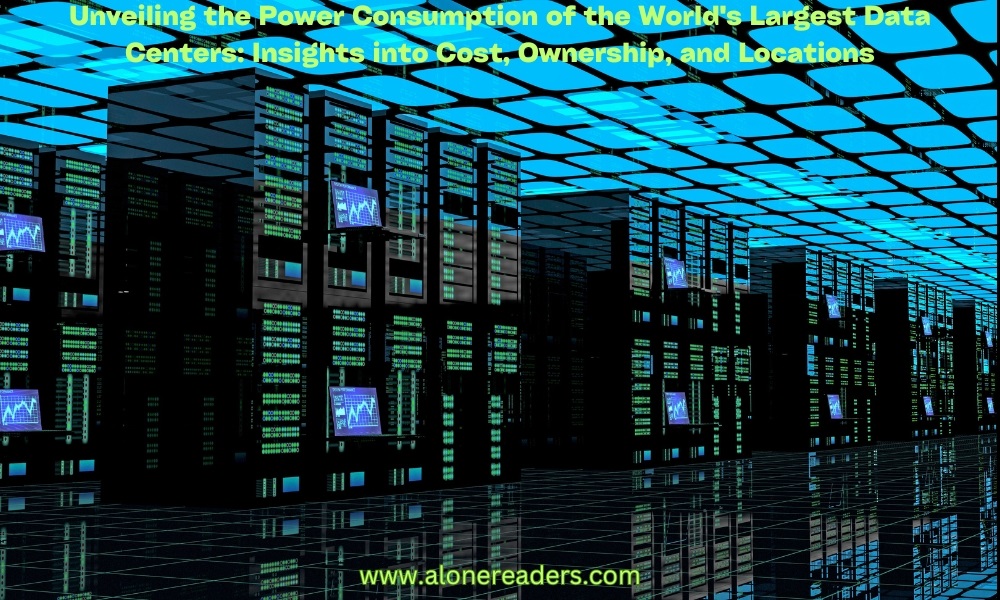
Data centers are the backbone of the digital age, housing the critical infrastructure for storing, processing, and distributing large amounts of data. With the ever-growing demand for data processing and cloud services, the size and power consumption of these facilities have become a topic of immense interest and importance. In this article, we delve into the power usage of some of the world's largest data centers, examining their locations, owners, and the costs associated with establishing these technological behemoths.
One of the most notable data centers in terms of size and power consumption is the Range International Information Group data center in Langfang, China. This facility spans over 6.3 million square feet and is pivotal for cloud computing services in the region. As one of the largest data centers globally, its power requirements are immense, though specific figures are often proprietary. The establishment cost of such a facility is estimated to run into several billion dollars, considering the state-of-the-art technology and infrastructure required.
In the United States, the Switch SuperNAP data center in Las Vegas, Nevada, stands out. Owned by Switch, a renowned data center company, this facility covers approximately 3.5 million square feet. The power requirements for this data center are equally staggering, often exceeding several hundred megawatts. The investment to set up the SuperNAP was significant, reflecting the advanced cooling systems and redundant backup systems essential for its uninterrupted operation.
Another giant in the data center world is the Lakeside Technology Center in Chicago, owned by Digital Realty Trust. Spanning 1.1 million square feet, this data center is a critical hub for telecommunications and internet infrastructure. While exact power usage figures are not publicly disclosed, it's known that such facilities can consume power equivalent to a small city. The cost of establishing the Lakeside Technology Center, like others of its caliber, likely involved hundreds of millions of dollars, considering its sophisticated design and security features.
In Europe, the Lefdal Mine Datacenter in Norway presents a unique case. Located in an abandoned mine, it utilizes natural cooling from the surrounding bedrock and fjord water, reducing its energy footprint. While smaller than the aforementioned giants, the innovation in its design highlights the industry's move towards sustainable practices. The cost of converting the old mine into a state-of-the-art data center would have included not only the technical infrastructure but also the adaptation of the existing mine structure, making it a costly endeavor.
The power consumption of these data centers is a critical issue, especially considering the global push towards reducing carbon footprints. Data centers consume an estimated 2% of the world's electricity, a figure that is rapidly growing with the increase in digital services. The electricity costs alone for running such massive facilities can run into the millions of dollars per month. As such, there is an increasing trend towards locating data centers in regions with access to renewable energy sources and cooler climates to reduce cooling costs, like in the case of the Lefdal Mine Datacenter.
The establishment of a giant data center is a complex and costly process, involving not just the physical infrastructure but also the technological, security, and environmental considerations. The initial investment for setting up a large data center can range from a few hundred million to several billion dollars. This cost includes land acquisition, building construction, power infrastructure, cooling systems, security measures, and state-of-the-art servers and networking equipment.
Furthermore, the ongoing operational costs are substantial. These include electricity for powering and cooling the servers, maintenance of the infrastructure, security operations, and periodic upgrades to keep up with technological advancements. The operational efficiency of these data centers is crucial, as it directly impacts the cost and environmental footprint.
In conclusion, the world's largest data centers are marvels of modern technology, requiring significant resources in terms of power and capital. As the demand for data processing and cloud services continues to grow, the industry faces the challenge of increasing capacity while also being mindful of environmental impacts. Innovations in energy efficiency and sustainable design are therefore key to the future of data center development, ensuring that our digital world can expand sustainably.